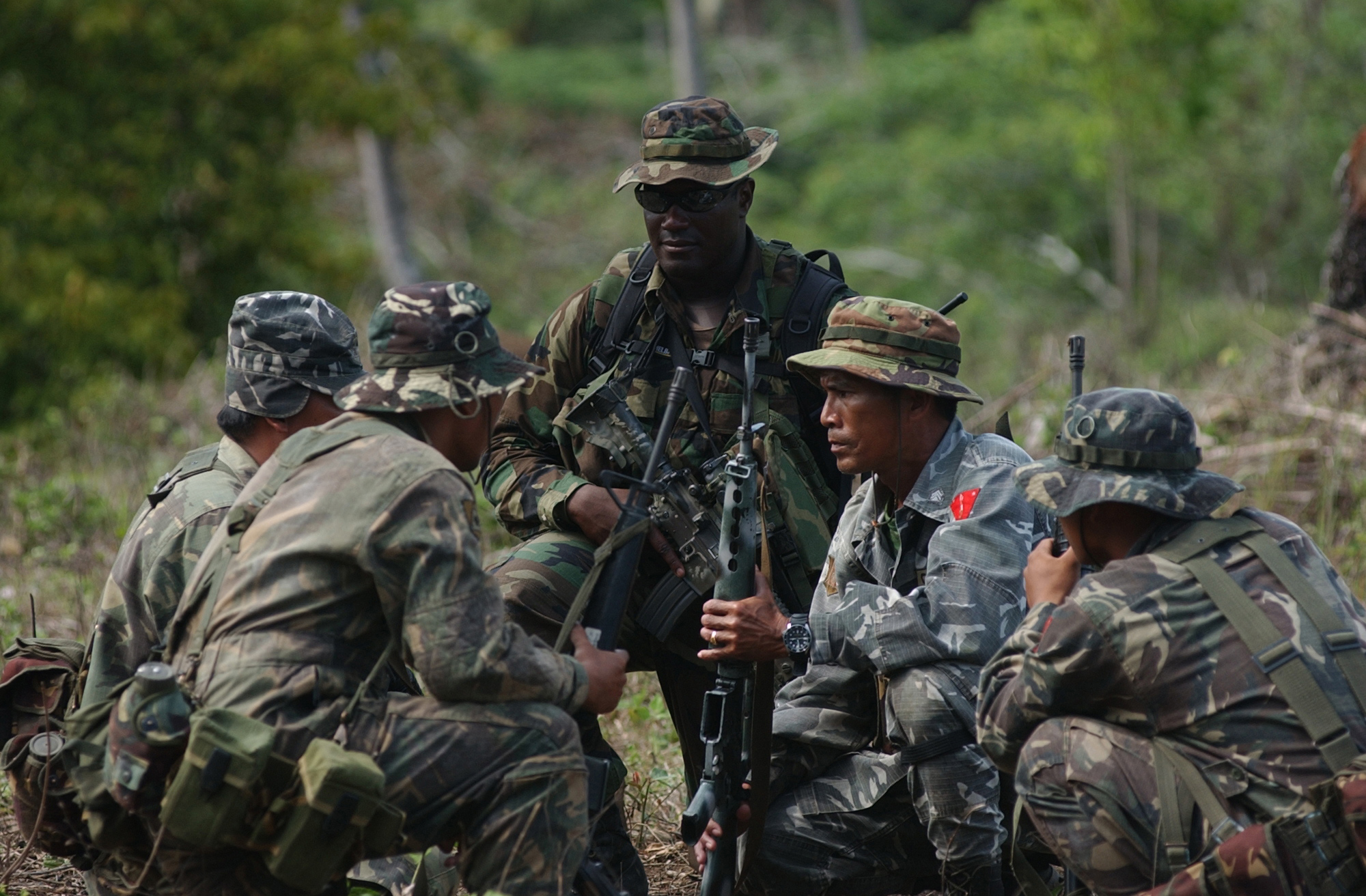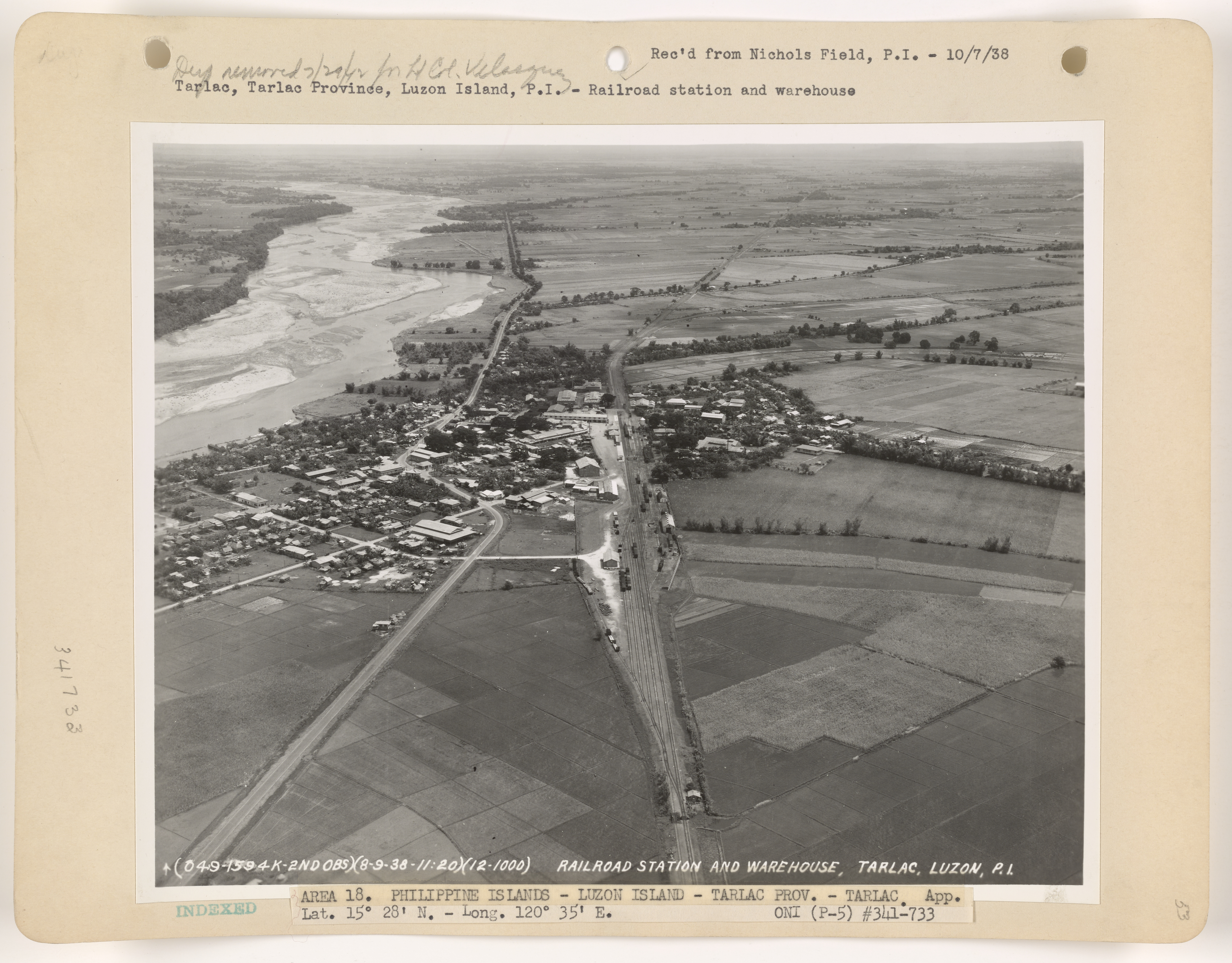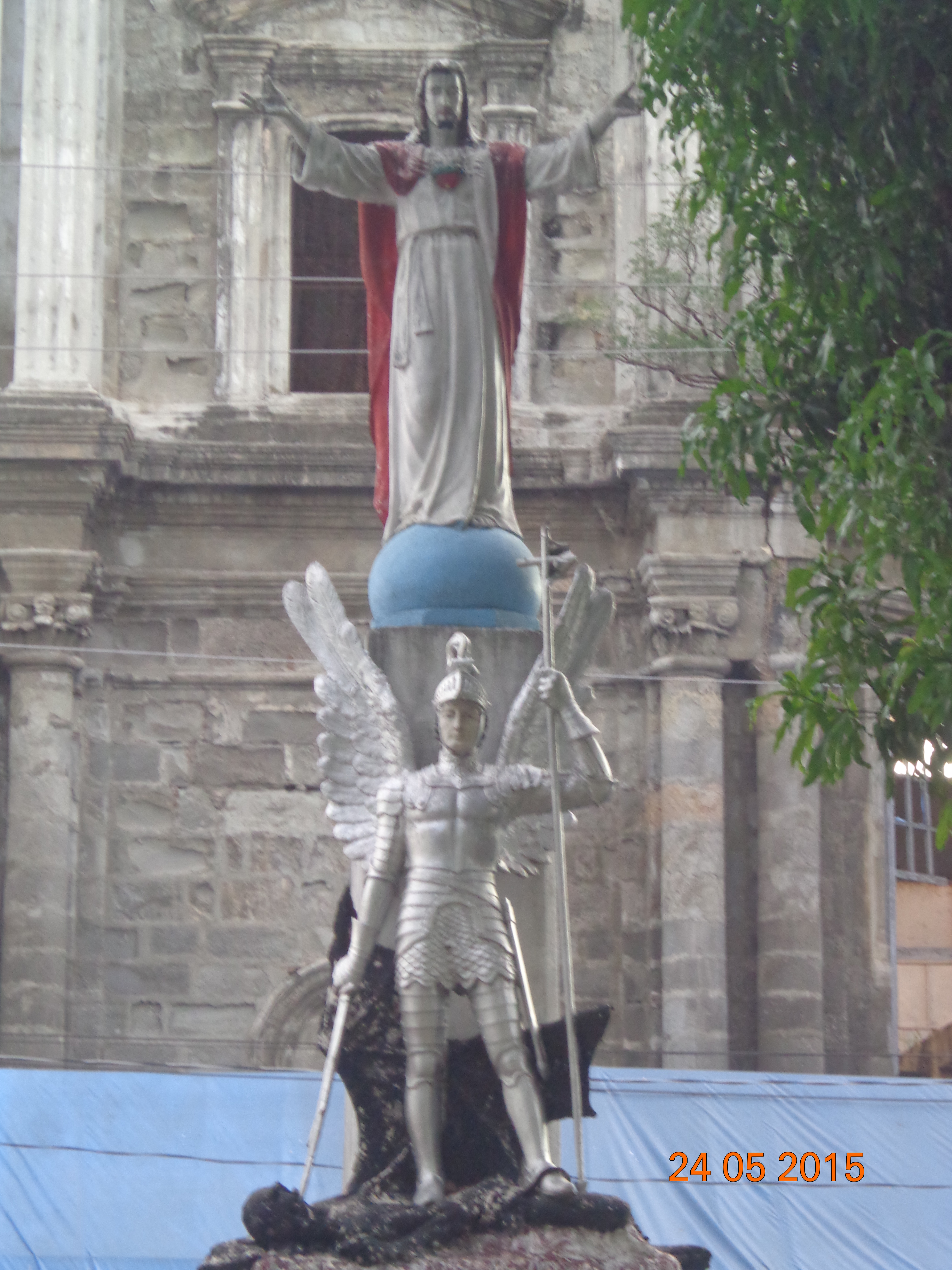|
Tarlac
Tarlac, officially the Province of Tarlac ( pam, Lalawigan ning Tarlac; pag, Luyag/Probinsia na Tarlac; ilo, Probinsia ti Tarlac; tgl, Lalawigan ng Tarlac; ), is a landlocked province in the Philippines located in the Central Luzon region. Its capital is the city of Tarlac. It is bounded on the north by the province of Pangasinan, Nueva Ecija on the east, Zambales on the west and Pampanga in the south. The province comprises three congressional districts and is subdivided into 17 municipalities and one city, Tarlac City, which is the provincial capital. The province is situated in the heartland of Luzon, in what is known as the Central Plain also spanning the neighbouring provinces of Pampanga, Pangasinan, Nueva Ecija and Bulacan. Tarlac covers a total land area of . Early in history, what came to be known as Valenzuela Ranch today was once a thickly-forested area, peopled by roving tribes of nomadic Aetas who are said to be the aboriginal settlers of the Philippines, ... [...More Info...] [...Related Items...] OR: [Wikipedia] [Google] [Baidu] |
Tarlac City
Tarlac City, officially the City of Tarlac ( pam, Lakanbalen ning Tarlac; pag, Siyudad na Tarlac; ilo, Siudad ti Tarlac; fil, Lungsod ng Tarlac ), is a 1st class component city and capital of the province of Tarlac, Philippines. According to the 2020 census, it has a population of 385,398 people. The city was proclaimed as a highly urbanized city by the former President Gloria Macapagal Arroyo, but the decision was opposed by the provincial government. History Tarlac's first settlers came from Bacolor, Pampanga. They cleared the area, fertilised the soil, and then established their settlement here in 1788. This small community of settlers experienced rapid population growth, as settlers from Bataan, Pampanga and Zambales moved into the area. The Kapampangan language, which is the dialect of Pampanga, became the native language of this town. Roads and barrios were built over the following decades through hard work of its residents. Following the foundation of the provinc ... [...More Info...] [...Related Items...] OR: [Wikipedia] [Google] [Baidu] |
Concepcion, Tarlac
Concepcion, officially the Municipality of Concepcion ( pam, Balen ning Concepcion; fil, Bayan ng Concepcion), is a 1st class municipality in the province of Tarlac, Philippines. According to the 2020 census, it has a population of 169,953 people. History In 1860, the towns of Concepcion and Magalang comprised a single town named San Bartolome (presently an abandoned town and a barangay of Concepcion), which was a military ''Commandancia'' of Pampanga under the Spanish regime. A catastrophic flood devastated the whole settlement of San Bartolome in 1863 and its residents were left with no other choice but to abandon the place. Divided as to where they were to resettle, some went north and others went south. The first group, headed by Don Pablo Luciano, the Governadorcillo, organized a new settlement on the slopes of Mt. Arayat further south and named the settlement after him. Eventually, the place was renamed Magalang. The second group who took refuge in the north comprised t ... [...More Info...] [...Related Items...] OR: [Wikipedia] [Google] [Baidu] |
Camiling
Camiling, officially the Municipality of Camiling, ( pag, Baley na Camiling; ilo, Ili ti Camiling; tl, Bayan ng Camiling) is a 1st class municipality in the province of Tarlac in the Philippines. According to the 2020 census, it has a population of 87,319 people. Camiling is one of the fastest-growing towns of Tarlac when it comes to income and economy. It is also considered one of the richest when it comes to cultural heritage in the entire province. The town is also dubbed to be the ''"Old Lady in the Northwestern province of Tarlac"'' because it is one of the oldest municipality created by the Spanish government under the province of Pangasinan where it previously included the former barrio of Mayantoc, San Clemente, and Santa Ignacia. The municipality also features cultural antiquity such as its churches, ancestral houses, and ruins. However, the baroque church of Camiling has yet to be restored after 20 years since a fire burned its interior. The inside of the church, one ... [...More Info...] [...Related Items...] OR: [Wikipedia] [Google] [Baidu] |
Bamban, Tarlac
Bamban, officially the Municipality of Bamban ( pam, Balen ning Bamban; fil, Bayan ng Bamban), is a 2nd class municipality in the province of Tarlac, Philippines. According to the 2020 census, it has a population of 78,260 people. The municipality of Bamban is the southernmost gateway of the melting pot province of Tarlac in the Central Plain of Luzon in the Philippines. Being the southernmost town in the province, it has a common boundary with Mabalacat, Pampanga, and in the west, with Zambales. The boundary is defined by the Parua River, which is a source of irrigation water, food, and sand and gravel for infrastructure projects. The mountainous region situated in the western part comprises almost two-thirds of the total land area, which used to be within the US Military Reservations. Nestled in this part are the BLISS projects and to the north, the MAR settlement project, which when completely developed will be a source of livelihood and food supplies for Central Luzon. Bamb ... [...More Info...] [...Related Items...] OR: [Wikipedia] [Google] [Baidu] |
Camiling, Tarlac
Camiling, officially the Municipality of Camiling, ( pag, Baley na Camiling; ilo, Ili ti Camiling; tl, Bayan ng Camiling) is a 1st class municipality in the province of Tarlac in the Philippines. According to the 2020 census, it has a population of 87,319 people. Camiling is one of the fastest-growing towns of Tarlac when it comes to income and economy. It is also considered one of the richest when it comes to cultural heritage in the entire province. The town is also dubbed to be the ''"Old Lady in the Northwestern province of Tarlac"'' because it is one of the oldest municipality created by the Spanish government under the province of Pangasinan where it previously included the former barrio of Mayantoc, San Clemente, and Santa Ignacia. The municipality also features cultural antiquity such as its churches, ancestral houses, and ruins. However, the baroque church of Camiling has yet to be restored after 20 years since a fire burned its interior. The inside of the church, o ... [...More Info...] [...Related Items...] OR: [Wikipedia] [Google] [Baidu] |
Capas
Capas, officially the Municipality of Capas ( pam, Balen ning Capas; tgl, Bayan ng Capas), is a 1st class municipality in the province of Tarlac, Philippines, and one of the richest towns in the province. The town also consists of numerous subdivisions and exclusive villages. Capas is being dubbed as the “Tourism Capital of Tarlac." Apart from being known as the final site of the infamous Bataan Death March, it is also known for Mount Pinatubo treks, where thousands of mountaineers and visitors go. The town has some industrial factories like the PilMiCo. History Originally a part of Zambales and Pampanga, its first settlers were the Kapampangan and the Aeta. It was founded in the year 1710 by the Augustinian Friars. During the American Colonial period, the Americans built the Camp O'Donell for military installation until when the Japanese used it as a concentration camp during the Bataan Death March as the last stop of the march. Capas as all other towns in Tarlac pro ... [...More Info...] [...Related Items...] OR: [Wikipedia] [Google] [Baidu] |
Capas, Tarlac
Capas, officially the Municipality of Capas ( pam, Balen ning Capas; tgl, Bayan ng Capas), is a 1st class municipality in the province of Tarlac, Philippines, and one of the richest towns in the province. The town also consists of numerous subdivisions and exclusive villages. Capas is being dubbed as the “Tourism Capital of Tarlac." Apart from being known as the final site of the infamous Bataan Death March, it is also known for Mount Pinatubo treks, where thousands of mountaineers and visitors go. The town has some industrial factories like the PilMiCo. History Originally a part of Zambales and Pampanga, its first settlers were the Kapampangan and the Aeta. It was founded in the year 1710 by the Augustinian Friars. During the American Colonial period, the Americans built the Camp O'Donell for military installation until when the Japanese used it as a concentration camp during the Bataan Death March as the last stop of the march. Capas as all other towns in Tarl ... [...More Info...] [...Related Items...] OR: [Wikipedia] [Google] [Baidu] |
Gerona, Tarlac
Gerona, officially the Municipality of Gerona ( pam, Balen ning Gerona; tgl, Bayan ng Gerona), is a 1st class municipality in the province of Tarlac, Philippines. According to the 2020 census, it has a population of 94,485 people. The MacArthur Highway goes through the center of the town. Geography Gerona is one of the 17 towns of the province of Tarlac. It is bounded on the north by Paniqui; on the east by the Pura; on the south by Tarlac City (the provincial capital); and on the west by Santa Ignacia. The town is from Tarlac City, the provincial capital; from Clark Special Economic Zone in Angeles City; from the regional center San Fernando, Pampanga, and north of Metro Manila. Gerona has a land area of of plain and rugged agricultural land representing 4.63% of the province total area. The Tarlac River, which originates from the eastern slopes of the Zambales Mountains, cuts across the west central areas, dividing the town into two parts. The eastern area consists ... [...More Info...] [...Related Items...] OR: [Wikipedia] [Google] [Baidu] |
La Paz, Tarlac
La Paz, officially the Municipality of La Paz ( pam, Balen ning La Paz; tl, Bayan ng La Paz), is a 2nd class municipality in the province of Tarlac, Philippines. According to the 2020 census, it has a population of 68,952 people. History The early history of La Paz is unclear. Legends state that there was an old pueblo called " Cama Juan" situated along the bank of the Chico River, bordering the province of Tarlac and Nueva Ecija. When the Chico River overflowed during a storm, a great flood swept the entire pueblo during the night. The flood is said to have devastated the area, claiming many lives. This forced the inhabitants of "Cama Juan" to evacuate. The old site (Cama Juan) is known as "Balen Melakwan" or "Abandoned Town". The inhabitants chose a field of evergreen grass and shrubbery on which to rebuild, which they named "Matayumtayum". Towards the end of the nineteenth century, Francisco Macabulos and Captain Mariano Ignacio selected a more centrally located site for ... [...More Info...] [...Related Items...] OR: [Wikipedia] [Google] [Baidu] |
Anao, Tarlac
Anao, officially the Municipality of Anao ( pag, Baley na Anao; ilo, Ili ti Anao; tgl, Bayan ng Anao), is a 5th class municipality in the province of Tarlac, Philippines. According to the 2020 census, it has a population of 12,208 people. The smallest town in terms of land area in the whole of Tarlac, Anao covers a total land area of . Formerly a part of Pangasinan province, Anao was founded and organized into a municipality on March 16, 1870. Every year on the March 16, the foundation of the town is celebrated along with the Ylang-Ylang Festival. Geography Anao is east of the provincial capitol and nestling on the Tarlac-Nueva Ecija border. Located in the north-eastern part of Tarlac, it is bound on the north by San Manuel, in the east by Nampicuan, on the south by Ramos and on the west by Paniqui and Moncada. Barangays Anao is politically subdivided into 18 barangays. * Baguindoc (Baguinloc) * Bantog * Campos * Carmen * Casili * Don Ramon * Hernando * Poblacion * Riza ... [...More Info...] [...Related Items...] OR: [Wikipedia] [Google] [Baidu] |
Paniqui, Tarlac
Paniqui, officially the Municipality of Paniqui ( ilo, Ili ti Paniqui; pag, Baley na Paniqui; tgl, Bayan ng Paniqui), is a 1st class municipality in the province of Tarlac, Philippines. According to the 2020 census, it has a population of 103,003 people. It is the birthplace of the 11th President of the Philippines, Corazon Aquino. Etymology Paniqui is a Hispanized term derived from the Ilocano word "''pampaniki''" which means " bat", since the town has caves that house bats. History The birth of Paniqui could be traced way back in 1712 when the provincial government of Pangasinan sent a group of men south of Bayambang, Pangasinan for the expansion of the Christian faith. The pioneering group was led by two brothers, Raymundo and Manuel Paragas of Dagupan and established the Local Government in a Sitio called "manggang marikit" (mango of an unmarried woman). Surprisingly, in this sitio, there is a great number of mammals called by Ilocanos "pampaniki" and it was from this ter ... [...More Info...] [...Related Items...] OR: [Wikipedia] [Google] [Baidu] |
Mayantoc, Tarlac
Mayantoc, officially the Municipality of Mayantoc ( pag, Baley na Mayantoc; ilo, Ili ti Mayantoc; tl, Bayan ng Mayantoc), is a 3rd class municipality in the province of Tarlac, Philippines. According to the 2020 census, it has a population of 32,597 people. It is nestled in the foothills of the Zambales Mountains where the Camiling River originates and provides many scenic picnic and swimming sites, making it known as the summer capital of the province. The most common road to Mayantoc starts at "Crossing Mayantoc", at the national highway to Camiling, Tarlac just after the then Tarlac College of Agriculture (now the Tarlac Agricultural University) campus. Etymology The town got its name after a palm called 'yantoc' due to its abundance in the place. History The first settlers of Mayantoc before the coming of Christian migrants were the negritos of the Abiling tribe. As they arrived in great numbers, so the natives were soon forced to move deeper into the forest areas of the Z ... [...More Info...] [...Related Items...] OR: [Wikipedia] [Google] [Baidu] |






